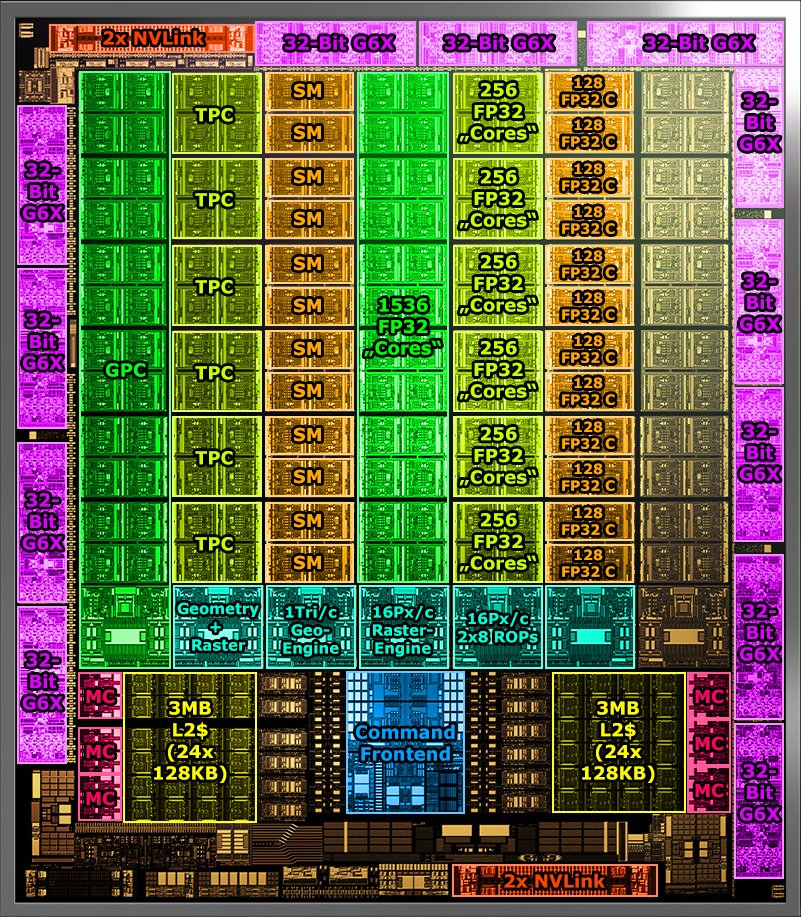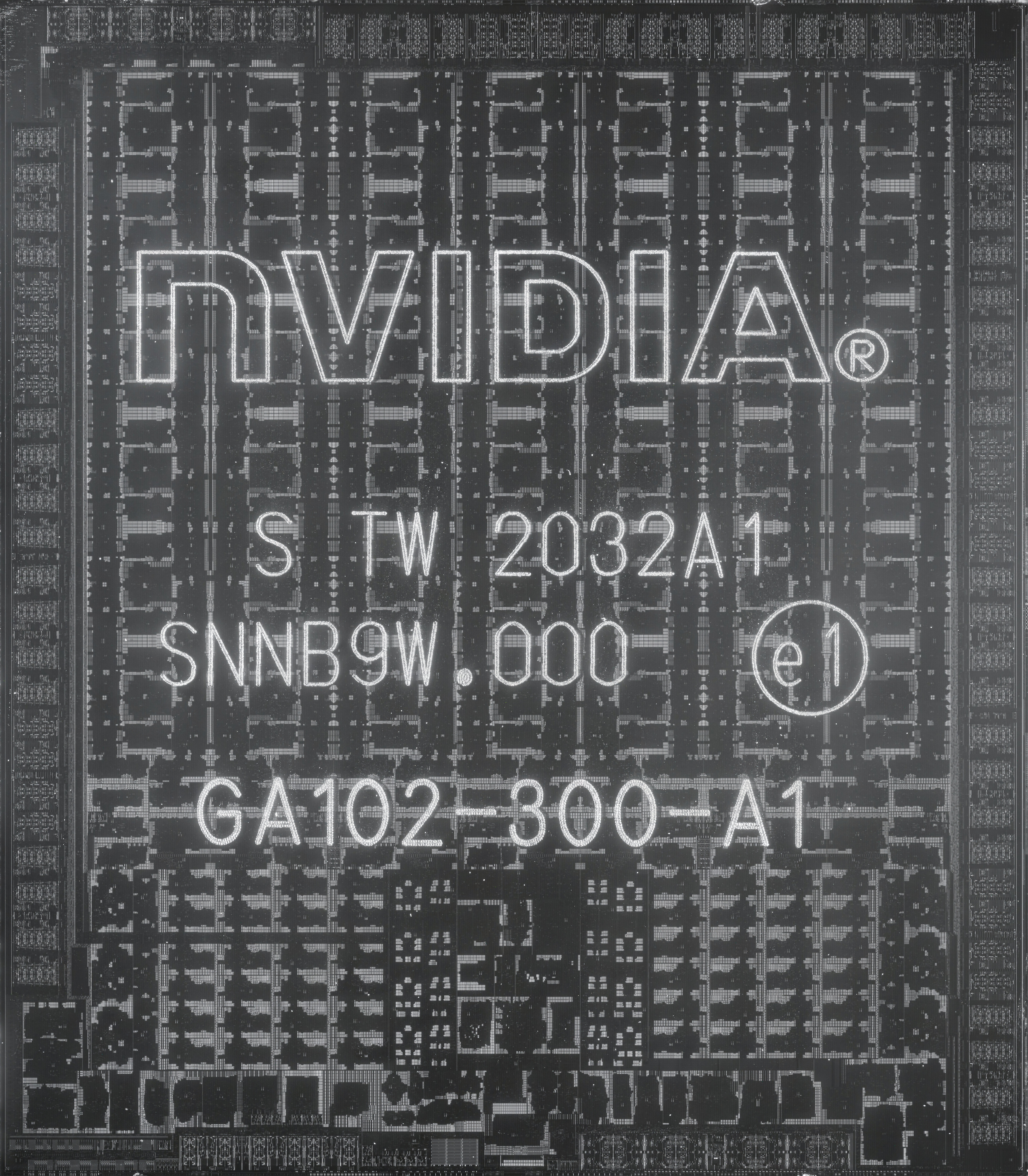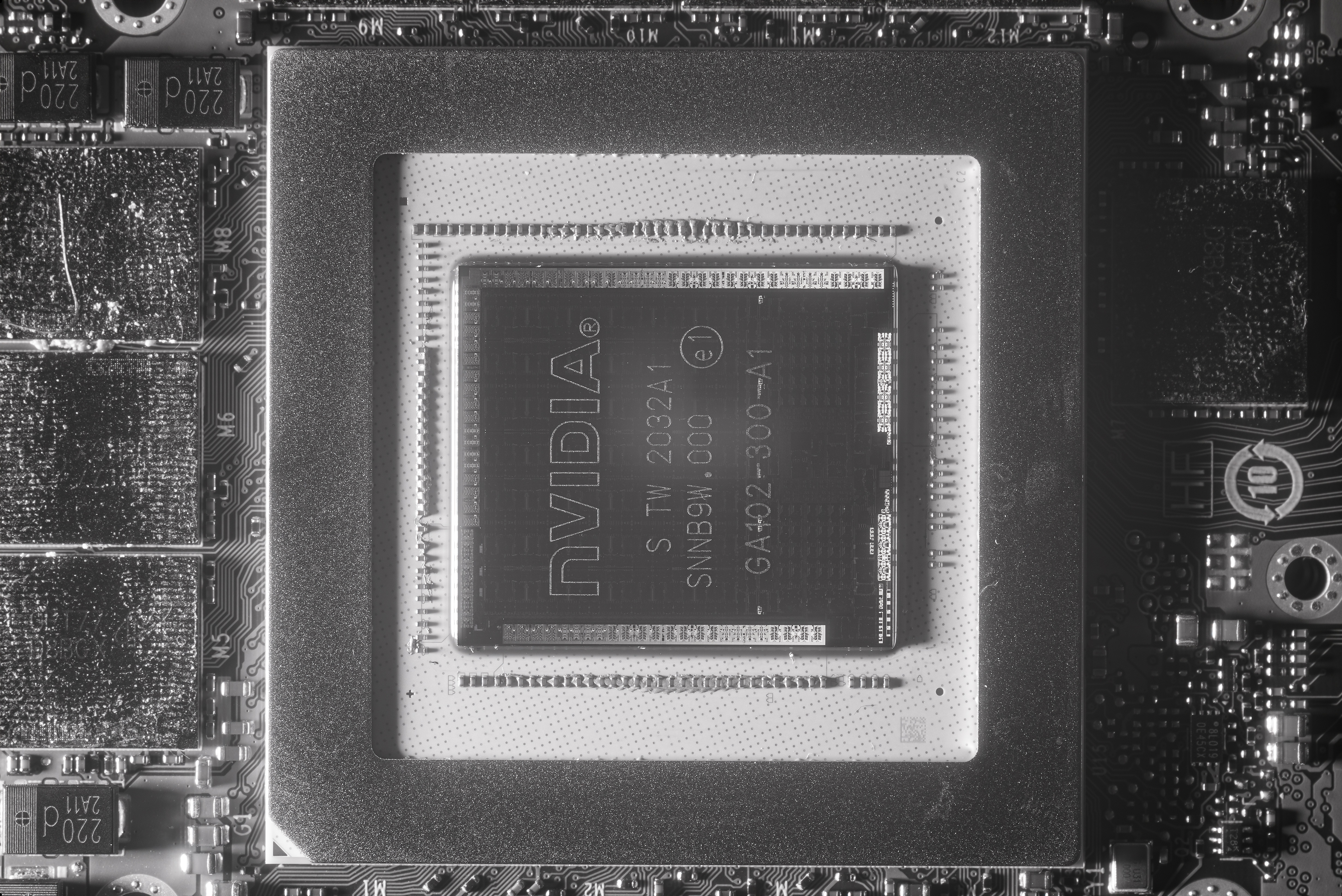IR Photographer Shares Die Shots of Nvidia 3000 Series GA102 Silicon
Renowned infrared (IR) photographer Fritzchens Fritz has delighted us with a couple high-resolution photographs of Nvidia's GA102 Ampere silicon. The GA102, which is featured inside the GeForce RTX 3090 and RTX 3080 and is also rumored to power the upcoming GeForce RTX 3080 Ti.
With a die size of 628.4 mm-squared, the GA102 is, by far, Nvidia's biggest mainstream Ampere gaming silicon. Fabricated on an optimized version of Samsung's 8nm process, the GA102 bears an impressive 28.3 billion transistors. Building on Nvidia's microarchitectures, Ampere proudly carries the latest second-generation RT cores for ray tracing and third-generation Tensor cores for artificial intelligence workloads.

If you look very closely at the die shot, you'll see Ampere's specifications come to life. Twitter user Locuza has added annotations to Fritz's photographs for better visualization. The GA102, in particular, contains seven Graphics Processing Clusters (GPCs) whereby each GPC holds 12 Streaming Multiprocessors (SMs). Therefore, the GA102 die has a grand total of 84 SMs. Consequently, each SM contains 128 CUDA cores, four Tensor cores and one RT cores. A complete GA102 die works out to 10,752 CUDA cores, 336 Tensor cores and 84 RT cores.




Nvidia utilizes the GA102 silicon for various models. This helps the chipmaker maximize profits, since what doesn't meet the requirements for a certain SKU can be used for a lower-tier model instead.
So far, no Ampere-powered GeForce graphics card leverages the full GA102 die. The GeForce RTX 3090, which is the current flagship model and one of the best graphics cards for gamers, comes close, though, with 82 enabled SMs. The current configuration certainly leaves headroom for another SKU down the road should Nvidia see the need to release something faster than the GeForce RTX 3090 to rival AMD's Big Navi army. Knowing Nvidia's fighting spirit, we wouldn't be surprised if a GeForce RTX 3090 Ti or a Titan-grade model is already in the works.
Get Tom's Hardware's best news and in-depth reviews, straight to your inbox.

Zhiye Liu is a news editor, memory reviewer, and SSD tester at Tom’s Hardware. Although he loves everything that’s hardware, he has a soft spot for CPUs, GPUs, and RAM.
-
Gomez Addams ReplyThe current configuration certainly leaves headroom for another SKU down the road should Nvidia see the need to release something faster than the GeForce RTX 3090 to rival AMD's Big Navi army.
I think it's more a matter of getting full yield from the die. That means having all 84 of the SMs working instead of just 82.
What I wonder about is the next step up - 96 GPCs? -
TokyoQuaSar I would be extremely surprised if they made a Titan on this generation, or that would be hard trolling imo. On a die of this size, the yield would be noticeably reduced just to enable 100% of the chip instead of 98%, thus a big bump in price (from an already high price), just to get 2% extra performance. They introduced the 3090 as the Titan of Ampere, unless there is a refresh (that would be in at least a year), there won't be a more powerful Ampere GPU than the 3090.Reply -
setx Reply
The main problem with "Titan" is power consumption, not the % of die enabled. That's why marketing throws at us "Titan-level performance" this generation and not a proper titan card.TokyoQuaSar said:I would be extremely surprised if they made a Titan on this generation, or that would be hard trolling imo. On a die of this size, the yield would be noticeably reduced just to enable 100% of the chip instead of 98%, thus a big bump in price (from an already high price), just to get 2% extra performance. They introduced the 3090 as the Titan of Ampere, unless there is a refresh (that would be in at least a year), there won't be a more powerful Ampere GPU than the 3090. -
TokyoQuaSar Reply
It's pretty much Titan level power consumption.setx said:The main problem with "Titan" is power consumption, not the % of die enabled. That's why marketing throws at us "Titan-level performance" this generation and not a proper titan card.